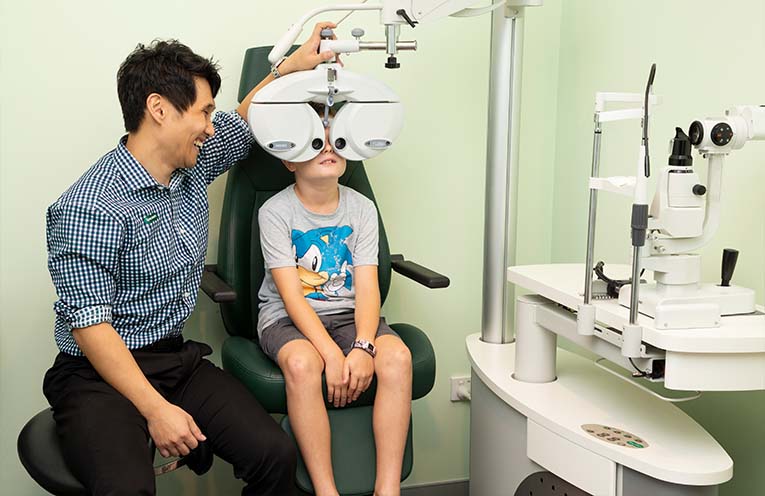
NEW research has found that generation Alpha are spending an average 3.5 hours per day on screens both at home and school, potentially impacting their eye health and increasing the chances of lifelong vision and learning issues.
The research, commissioned by Specsavers, has revealed that not only are young children aged five to twelve spending more than three times the amount on screens as recommended by the World Health Organisation (WHO) , but both parents and teachers aren’t completely confident in best prevention techniques to avoid vision damage.
 Advertise with News of The Area today.
Advertise with News of The Area today.It’s worth it for your business.
Message us.
Phone us – (02) 4981 8882.
Email us – media@newsofthearea.com.au
Amid this screen time surge, Optometrists in Coffs Harbour are calling on local parents and teachers – and anyone with children in their care for extended periods – to employ safer screen practices – including limiting up-close tasks, taking regular screen breaks and regular eye tests.
Children are being diagnosed with vision problems younger than ever before.
In Coffs Harbour, there are over 6,300 primary school aged children who could be at risk of vision issues and may not have had a regular eye test.
Myopia, or short sightedness, is on the rise globally, with the World Health Organisation estimating that 52 percent of the global population will have myopia by 2050.
And, there’s an alarming incidence spike amongst children, with time on digital screens as a major contributing factor.
Additionally, the Specsavers research found that 90 percent of primary school teachers say they have witnessed signs of eye strain in their students, such as rubbing eyes, watery eyes, headaches, neck aches, blurry vision, and not wanting to read aloud.
Over half (56 percent) of these teachers say that they witness this at least every week and sometimes more often.
An overwhelming 98 percent of primary school teachers say poor vision impacts the ability to learn.
This sparks concern that some children’s vision issues are being left untreated, when early detection is key to the management.
On top of this, one in three (29 percent) of children nine or under have never had an eye test.
“While myopia is typically successfully managed with prescription lenses, if left undiagnosed, it can impact day-to-day life,” Coffs Harbour City Centre Specsavers Optometrist Darren O’Reilly said.
“As Optometrists, we like to encourage parents, carers and teachers to ensure their children have their first eye test before starting school to detect and correct or manage any issues, so they don’t go untreated.
“Children’s eyes are still developing during their schooling years, and they can’t always tell you if they may not be able to see properly.
“If your child complains about headaches, blurred vision, trouble focusing or any other issues with their eyes, I recommend booking an appointment with an optometrist immediately rather than waiting until their next check-up.”
Darren’s top tips for digital eye strain
– Follow the 20-20-20 rule.
This means, every 20 minutes remind children to shift their eyes to look at an object at least 20 metres away, for at least 20 seconds.
The easiest way to do this is to take small ‘window’ breaks and look out at a faraway object to give tired eyes a break from the screen.
– Take breaks outside and encourage outside play.
Research shows us that spending two hours outdoors is a protective factor during daylight hours for children developing myopia or short-sightedness.
– Remind children to blink.
Blinking regularly keeps the surface of your eyes from drying out.
– Keep a bottle of water close by.
Your eyes dry out when you’re dehydrated so making sure children are drinking plenty of water throughout the day is important.
